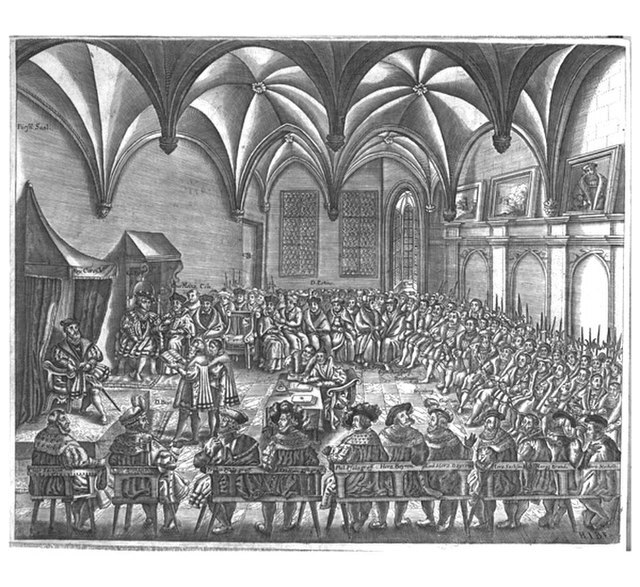Michel de Montaigne on confessional parity
The city of Augsburg was one of the German cities where Catholics and Protestants lived side by side. While the majority of the population was Protestant, the city council consisted of equal numbers of Catholics and Protestants.
The French nobleman, jurist and philosopher Michel de Montaigne (1533–1592) went in 1580–81 on a long journey through Italy. He came to southern Germany as well and visited Augsburg in October 1580. During his travels, he wrote a diary and noted his observations about the style of living and everyday culture. Montaigne was Catholic and saw in Augsburg for the first time a city in which Catholics and Protestants lived together. He noted:
‘Marriages between Catholics and Protestants take place daily. The part that has the most desire accepts the faith of the other. There are thousands of such marriages. Our host, for example, was a Catholic, his wife a Protestant.’
He also observed how the two confessions shared the church buildings of the city:
‘I visited the next morning, a Sunday, several churches, and found in the very numerous Catholic churches everywhere the worship service very well furnished. Six churches with sixteen pastors belong to the Protestants, two of them are taken away from the Catholics, the other four are built for them. From there we went to the very beautiful Church of the Holy Cross. Next to it stands a Lutheran church: here, too, they have logged in and attached themselves in the cloisters of the Catholic churches.’
The Reformation brought a division of the Christian church in Central Europe. Theologians like Martin Luther, Ulrich Zwingli, and others established new teachings on the Christian faith and belief. They soon found many followers. The different German states split up between the Catholic and the Evangelical side and divided into two political parties as well. After years of political struggles, this conflict even ended up in civil wars after 1546.
In 1555, the envoys of the German states met in Augsburg. They sought for a way to settle the conflict and end the religious wars in Germany. The Augsburg Peace of Religion of 25 September 1555 finally accepted the existence of two different Christian churches. The princes and rulers could decide whether to stay with the old Catholic church or to adhere to the new Lutheran belief as formulated in the Augsburg Confession of 1530. The Lutheran states were now on an equal footing with the Catholic ones. Other religious groups, which came up with the Reformation, were, however, excluded from the Peace treaty. Freedom of religion applied only to the German estates, i.e. the princes and imperial cities. Their subjects had to follow the faith of their sovereign or were allowed to emigrate. The Peace of Augsburg heralded a long period of peace in the German lands, which did not end until the Thirty Years’ War in 1618.
Why did Montaigne mention the marriages between Catholics and Protestants? What do you think about two religions using buildings close to each other for their worship?
Further information about The Peace of Augsburg can be found at On Site, In Time.
For more information on this and other peace treaties, see

